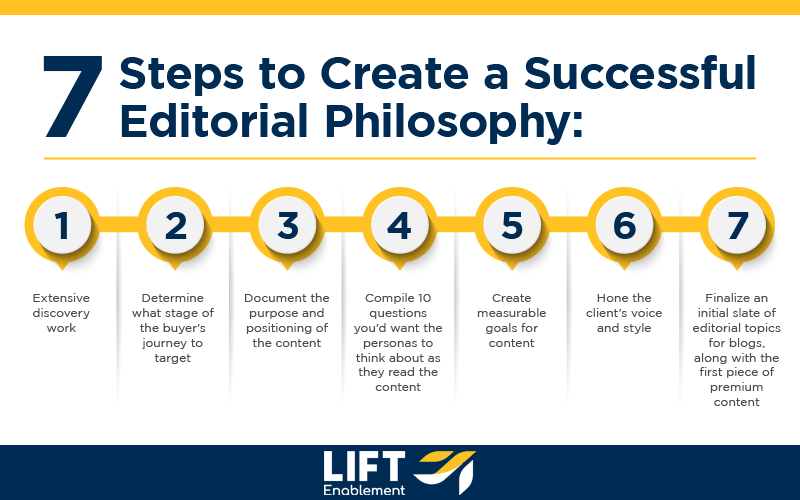 At Imagine, one thing we always do is develop an editorial philosophy for our full-service clients. “Philosophy” may sound vague and wishy-washy, but this document is truly a roadmap for our clients’ content. That’s because we lay a lot of groundwork with each client before we develop it. Here’s how the process works.
At Imagine, one thing we always do is develop an editorial philosophy for our full-service clients. “Philosophy” may sound vague and wishy-washy, but this document is truly a roadmap for our clients’ content. That’s because we lay a lot of groundwork with each client before we develop it. Here’s how the process works.
Before we even touch the editorial philosophy, we’ve already done extensive discovery work with the client on personas. We’ve also created our Messaging Blueprint, the culmination of a process that crafts positioning statements using the Three-Sale Mindset.
Next, we tackle the editorial philosophy. We create a draft based on client discussions and work collaboratively with the client to get it into its final form.

First, we begin the draft by determining what stage of the buyer’s journey we’re targeting. For editorial content, it’s almost always the early to mid-stage.
Then, we determine the purpose and positioning of the content, including a few key points we want to hammer home in content for education and awareness. Next, we write about 10 questions we’re trying to make the personas think about as they read the client’s content.
We also determine the ultimate goals for the content so we can measure progress and success.
Content contribution is always challenging because a prospect typically “touches” content in some way many times before a sale is closed, but having set goals is the first step in that measurement.
Next, we hone the “voice” and style we’ll be keeping in mind as we write content. Like everything else, this can evolve over time if necessary; we’ve had clients who originally wanted a more casual voice decide to become more professional in tone--and vice versa. Typically, though, this voice and style tends to stay consistent.
Finally, I listen to many of the recordings from the onboarding discovery interviews with the client and look at the Three-Sale problem statements and come up with an initial slate of editorial topics for blogs, as well as a plan for the first piece of premium content. That’s more intensive content that is either more in-depth than a blog or something that can be leveraged very specifically as a sales tool. We determine what the most pressing content gap is, then choose the piece of content. We also start to think about non-written content, like videos, and how they might integrate with something we already have planned.
Our client reads through the draft and makes any revisions they feel are necessary. Because we’ve done so much prep work, the changes are usually fairly minor.
After we’ve finalized the editorial philosophy, how do we make sure we stay on track and faithfully adhere to it? Imagine and the client meet for quarterly epic reviews and monthly content meetings to ensure everyone feels like everything is progressing as it should.
In addition, each content brief developed for writers includes the overall goal, the chosen persona for that piece of content, and the crucial point to convey. Whether writers are creating a blog or a more in-depth piece of content, they have a guide that gives them a clear path.
Content is an ever-evolving element in sales and branding success, and it can easily go off-track as new, shiny ideas appear and more people get involved in the process. An editorial guide is an important step to start you off on the right track--and will serve as a reference point to ensure you don’t go off-track.

